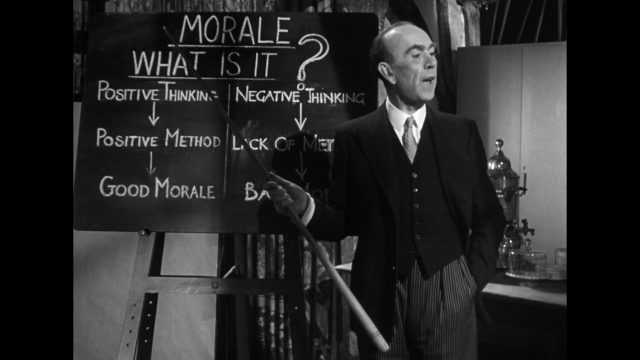Traditional mysteries are always embedded in their settings: the layout of that country house matters, and so does the taste of the tea and who happened to be serving it. I watched Green for Danger with a friend last night, and she pointed out that these kinds of mysteries are, in their way, great for historical research, because they include a superfluity of details that most things written in the time wouldn’t think to include. When everything could be a clue, the smallest bits of background matter.
Sidney Gilliat’s Green for Danger adopts that premise but sets it an unusual place: a rural English hospital during World War II, when bombs were still falling regularly and everyone’s lives had been disrupted. It even has an unusual (first) murder, one that happens on the operating table. All the doctors and nurses in the theater are suspects, and they all–naturally–have complex backstories and tangled personal lives that you can easily imagine come with motives for murder. These are old-fashioned pleasures done well, often with sharp dialogue and some additional verve. One of my favorite sequences is a long, fraught hospital ball where tensions keep rising to a boil. A group dance sweeps through the scene, set to a frenetically played “Here We Go Round the Mulberry Bush,” and one man gleefully improvises new, jarring lyrics that intrude on one of the conversations: “You shouldn’t believe a word he says, word he says, word he says…”
Into all of this comes Inspector Cockrill (Alastair Sim), an explosion of eccentricity in a carefully rendered landscape. The inhabitants of the hospital are all, perhaps, notably artificial–we can’t miss how they’re designed for their plot–but they exist on a more recognizable stage of reality. Cockrill is jarringly weird, jumpy and ghoulish and gleeful, relishing his work and acting as if he’s just as much of a spectator as we are. He even pulls up a chair to have a ringside seat for a fight that erupts. His appearance makes the back half of the movie strikingly strange… but he’s definitely part of the fun, not a distraction from it. He highlights that this is fiction–he practically comes with a banner that says I AM A NOTED SERIES CHARACTER–but in a movie that never really had any pretenses towards naturalism, that’s not a problem, just a change. And his stupendous weirdness, like the unusual setting, makes for a lot of fun. It’s all a typical closed setting mystery, but everything is just a little darker, just a little stranger, just a little more specific. And those traits let the movie go to some unusual places–even if all the toys have to go back in the box at the end.
Green for Danger is streaming on the Criterion Channel.

